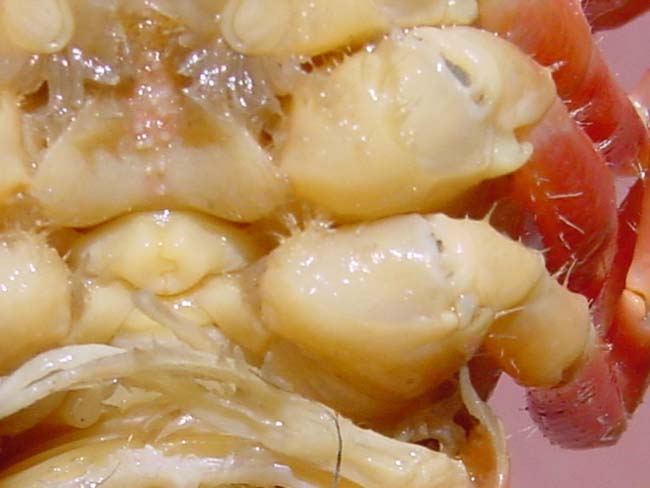
THE XERCES SOCIETY FOR INVERTEBRATE CONSERVATION Aquatic Invertebrates in Pacific Northwest Freshwater Wetlands |
| Identify taxa |
 |
|
Procambarus spp. (introduced crayfish) |
Procambarus species are introduced to the Pacific Northwest. They are native east of the Rocky Mountains. Of the two species that have been introduced, one has been found throughout the west, while the other has only been found in California. The introductions are probably the result of either released bait or aquarium crayfish. Procambarus is known for it's ability to burrow and withstand drying. Their tolerance to human disturbance, feeding habits (omnivores), and behaviors are not all too different from the native species, but unlike Pacifastacus, species of Procambarus will have either thumb-like lobes on one of the bottom segments of at least one pair of legs (males) or will have a hard, rounded, raised plate between the last two pairs of legs. An on-line key to Procambarus is available online from the Carnegie Museum of Natural History Section of Invertebrate Zoology. Procambarus spp. - crayfish introduced into
the Northwest |
Size: xlarge Identifying feature(s): tail and claws are well-developed; body flattened top to bottom; the species most likely to be encountered in the Northwest is generally red and bumpy when mature. Habitat: streams, lakes; still or moving waters Tolerance to pollutants: moderate |
 |
|
© 2007 Xerces Society
Contact info@xerces.org